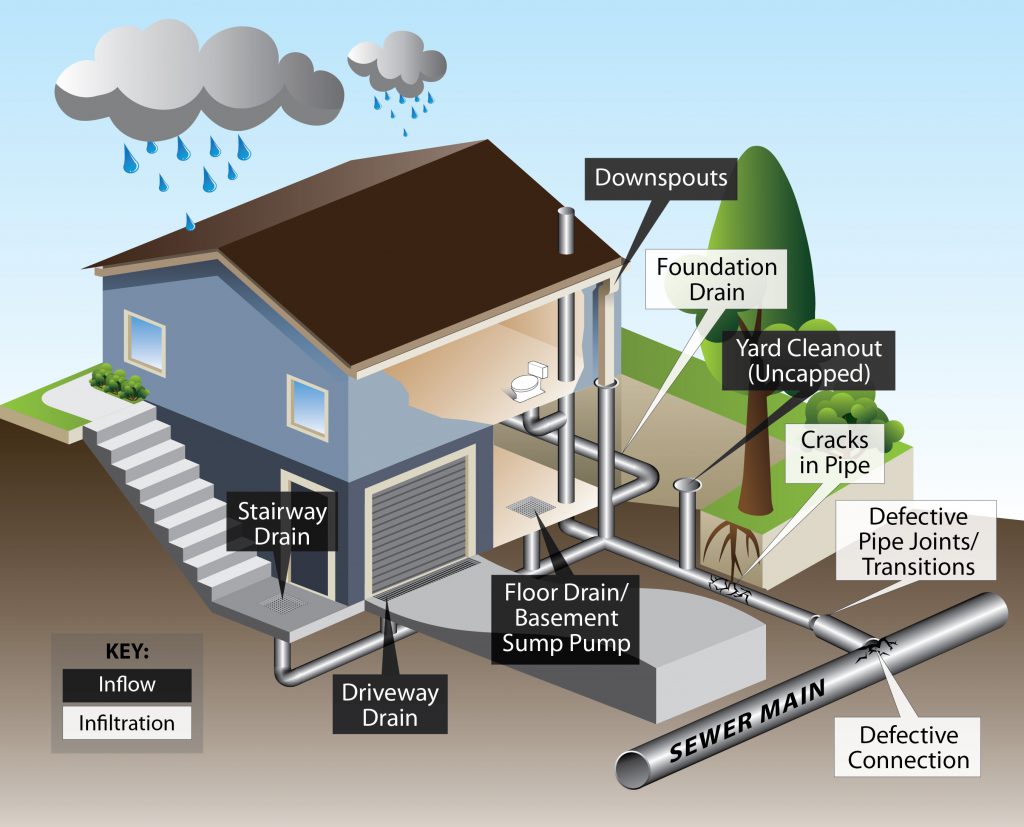Rain. It happens. Especially in Florida. We are known as the “Sunshine State”, but we might be better off being called the “Umbrella State” as we have an average of 54.5 inches of rain a year. This rain doesn’t come all at once, nor is it spread evenly throughout the year, and this can present some problems. There are times we pray for rain and times we pray for clear skies. Our thoughts about rain also depend on who we are and our role and relationship with water, but one thing is certain, none of us want to be dumping partially treated wastewater into our oceans and bays.
If you’re like me, you have probably wondered how rain and wastewater are connected. Why are some wastewater systems overloaded when it rains? These two things aren’t connected, are they? Well, it’s complicated, but the long story short is, yes. There are a few things to consider here:
- Pinellas County is old (founded in 1912)
- Some of our infrastructure is old or aging
- We are the most densely populated county in the state
- Our soils are sandy and our elevations are low
Okay, let’s make sense of this. Problem number one has to do with our old and aging infrastructure, in this case, pipes. When it rains, water that falls on unpaved areas will either evaporate or infiltrate and sink into the soil. If the soil is already saturated from previous rains (think of a wet sponge), the water starts to get creative in where it goes, and sometimes that is in the cracks and crevices of our pipes (also known as infiltration). So the pipes that normally carry wastewater from your house to the waste water treatment plant get inundated with rain water during storm events and that means trouble for waste water treatment plants that aren’t designed for this excess water.
In addition to the leaky pipes, we all have our own pipes that run from our house and out to the waste water treatment system (that is if you don’t have your own septic tank). Houses connected to the main system have what is called a “cleanout” that can be accessed by plumbers should there be a blockage or for regular inspection of pipes. These cleanouts are often covered with a lid that must be unscrewed to gain access to the pipe, but sometimes these lids are missing or loose, presenting a great outlet or inflow for the rain when it falls. Rain entering cleanouts is also another way wastewater pipes and treatment plants are getting overwhelmed with water. But wait, there’s more!

Many homes in Pinellas County also have rain gutters. Some are utilized as a way to collect water for landscape irrigation and some are used as a way to keep water away from homes. Rain gutters that are connected directly to cleanouts contribute to the possible overwhelming of waste water treatment plants during storm events. Rain spouts are best directed toward an area of your yard that will allow the water to soak into the soil. The same applies to swimming pools. If you need to drain your pool it is recommended to drain excess water into your yard. For the proper functioning of our wastewater treatment plants and stormwater management, pools should never be drained directly into a manhole, cleanout or any drainage system.
These are a few, little things we can do to help keep waste water treatment plants from receiving excess and unnecessary fresh water. In addition to these steps mentioned above, you can consider touring Pinellas County’s reclamation facilities to get a better understanding of their role and function in treating our waste water. You can tour South Cross Bayou Water Reclamation Facility in St. Petersburg by calling 727-582-7000 or the William E. Dunn Water Reclamation Facility in Palm Harbor by calling 727-453-6744.
 1
1
